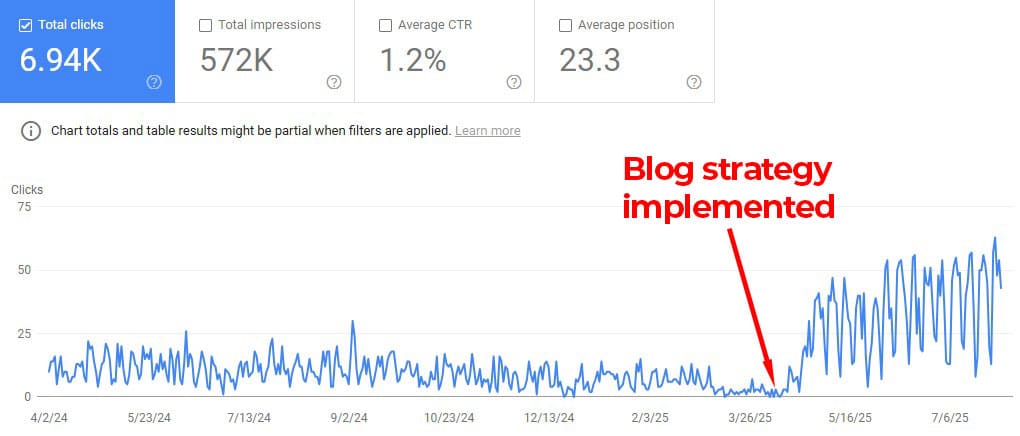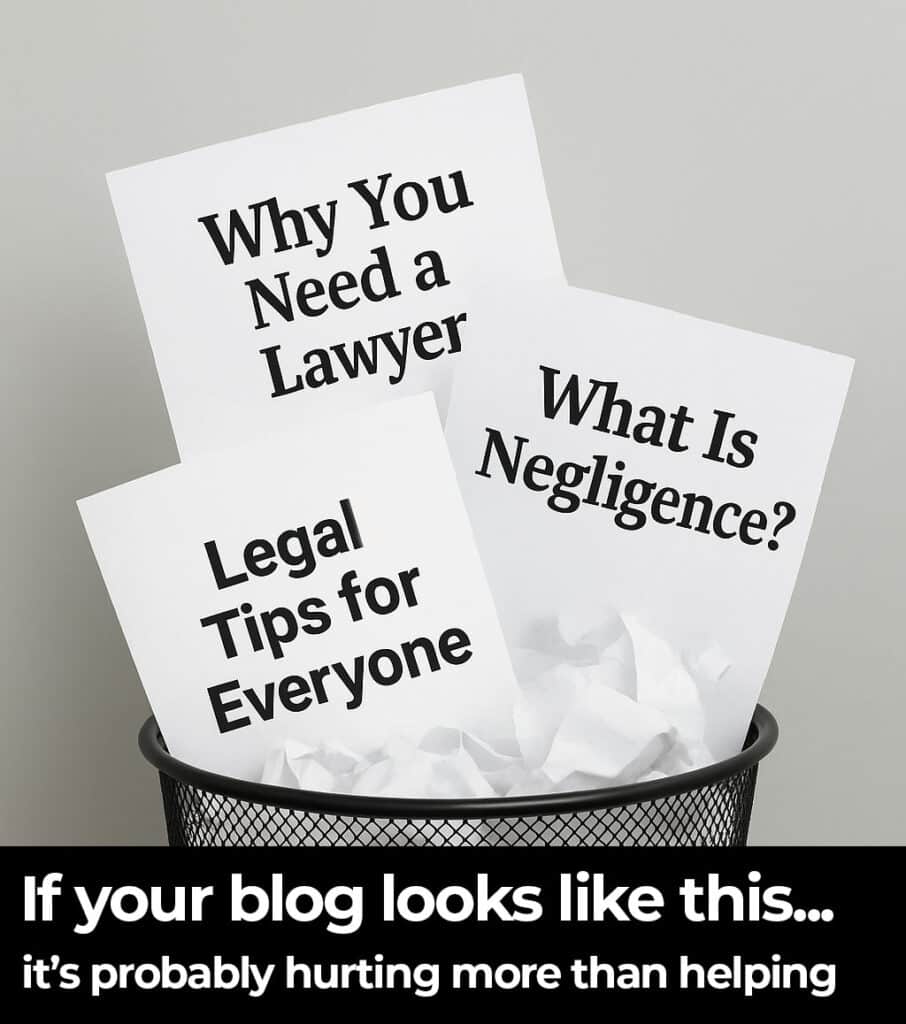You’ve probably heard it a hundred times by now: “Every law firm needs a blog.”
But do you, really?
Let’s cut through the SEO fluff and agency hype. Because blogging can either be a powerful driver of leads and rankings OR it can be a total waste of time.
Here’s how you’ll figure out whether or not you need one.
The Real Answer: It Depends
The truth is, not every law firm needs a blog.
If you’re a niche firm with low competition, or if you already dominate SERPs for all your core keywords, you might not need to blog weekly.
But what if you’re in a competitive market like personal injury law in one of the most competitive cities (like Houston, LA, or Atlanta)?
Well, you better be blogging. And it better have a strategy.
When Law Firm Blogging Actually Helps SEO
Here’s when law firm blogging pays off:
- Builds Topical Authority: Google likes depth. A well-structured blog helps you dominate themes like “car accident claims in Texas” or “filing a lawsuit after a slip and fall.”
- Covers Long-Tail Keywords: Most law firm websites chase big terms like “Houston car accident lawyer.” Blogging lets you target specific, long-tail, high-intent queries like “can you sue if someone runs a red light in Texas.”
- Supports Internal Linking: Blog posts can link back to core service pages, boosting their authority.
- Earns Featured Snippets and PAA Spots: Blog posts can answer questions that show up in “People Also Ask” and AI Overviews.
- Builds Trust with Google and Clients: Consistent blogging reinforces your E-E-A-T profile (Experience, Expertise, Authoritativeness, Trust).
When Law Firm Blogging Is a Complete Waste of Time
Law firm blogs only fail when they:
- Publish fluff written by non-lawyers (Google can tell)
- Cover generic legal topics with no local relevance
- Post once every 3 months and expect results
- Don’t connect to service pages or topical clusters
- Outsource to agencies who spin content across multiple clients (yes, we see you)
If your blog doesn’t build a clear funnel to cases or rankings, it’s not helping.
What a Strategic Law Firm Blog Actually Looks Like
A well-executed legal blog:
- Uses keyword research to find real search demand
- Builds out topical clusters around core practice areas
- Uses internal linking and schema markup (like FAQ or Article)
- Optimizes for AI Overviews and voice search
- Writes naturally but with structure: H1, H2, short paragraphs, bullets
- Has a refresh strategy for older posts (evergreen strategy)
Case Study: Proof Law Firm Blogging Can Work
Talk is cheap. So I’ve got proof.
Here’s a screenshot from Google Search Console showing what happened when I executed this exact strategy at scale for one of my law firm clients:

- 16-month data window
- 6,940 total clicks to blog content
- 572,000+ impressions
- Massive traffic spike starting April 2025 after we overhauled the blog strategy
This wasn’t luck. It was a deliberate strategy rooted in entity SEO, topic mapping, and NLP-friendly content.
From Generic to Intent-Driven Content
Compare these two blog titles:
- “Tips After a Car Accident” ❌ Generic, low CTR, likely duplicated
- “Can You Sue if Someone Hits You While Merging in Texas?” ✅ Specific, high intent, and maps to PAA
This is how you sneak into AI Overviews and featured snippets.
Either Do It Right or Don’t Even Bother
If you’re not going to invest in strategy, execution, and tracking, just skip the blog.
But if you’re serious about:
- Growing organic traffic
- Ranking for mid-to-long-tail legal queries
- Supporting your main pages with topical content
- Building brand trust with Google
…then the blog isn’t optional. It’s a weapon.
And we know how to wield it.
Want help building a blog that actually ranks and signs cases?


